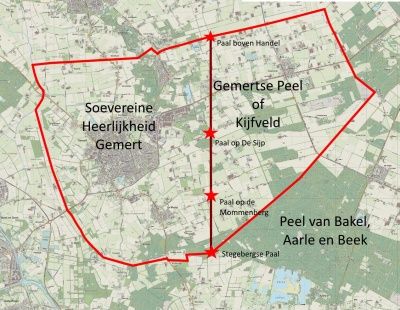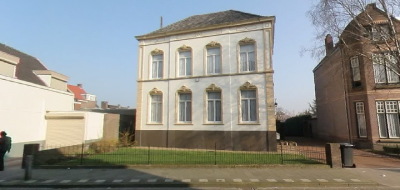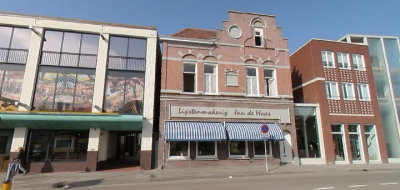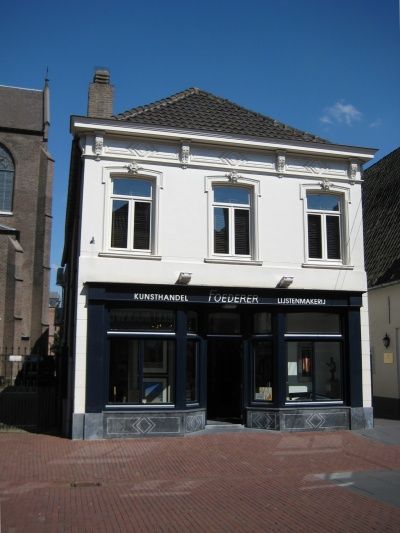Paal op De Sijp | Gemert
The Gemert Peel had a separate status from 1434. This was the result of years of bickering between the inhabitants of Bakel, Aarle-Rixtel, Beek en Donk and Helmond on the one hand and the inhabitants of Gemert and the Teutonic Order on the other over the rights to this area, which was therefore named Kijfveld. Traditionally, the Gemert Peel belonged to the sovereign lordship of Gemert, with the Teutonic Order as lord of the land. In 1408, 'those of Bakel, Aarle, Beek and Helmond' took the liberty of erecting boundary posts between Gemert and the Gemert Peel, thus appropriating the Kijfveld. Loud protest from Gemert, because after all, others could not on their own determine the boundary between the Duchy of Brabant and the fiefdom of Gemert.
Further investigation of the Gemert Peel
In 1411, th…
The Gemert Peel had a separate status from 1434. This was the result of years of bickering between the inhabitants of Bakel, Aarle-Rixtel, Beek en Donk and Helmond on the one hand and the inhabitants of Gemert and the Teutonic Order on the other over the rights to this area, which was therefore named Kijfveld. Traditionally, the Gemert Peel belonged to the sovereign lordship of Gemert, with the Teutonic Order as lord of the land. In 1408, 'those of Bakel, Aarle, Beek and Helmond' took the liberty of erecting boundary posts between Gemert and the Gemert Peel, thus appropriating the Kijfveld. Loud protest from Gemert, because after all, others could not on their own determine the boundary between the Duchy of Brabant and the fiefdom of Gemert.
Further investigation of the Gemert Peel
In 1411, the duke called on the villages to respect the boundary of the German Order territory. In the investigation that followed, "those of Bakel, Aarle, etc." had to admit that the border posts of 1408 had no value. The Duke of Brabant then proclaimed himself owner of the Kijfveld in 1434 and immediately sold it to the Teutonic Order. The monetary compensation was passed on to the inhabitants of Gemert.
Sale of the Gemertse Peel
When in the 19th century all wasteland was transferred to the villages by the Dutch state, this was not the case for the Gemertse Peel. The state had previously confiscated all the property of the Teutonic Order and therefore considered itself the owner. After another long process, it was decided in 1871 that the Gemertse Peel would be sold and that the village of Gemert would receive part of the proceeds. The remaining portion was forced through the village's nose. The second financial noose for Gemert over the Kijfveld.
Red lines are the boundaries of Gemert. Between the Kijfveld and sovereign Gemert, the border from 1434 runs along four boundary posts, indicated by red stars.











